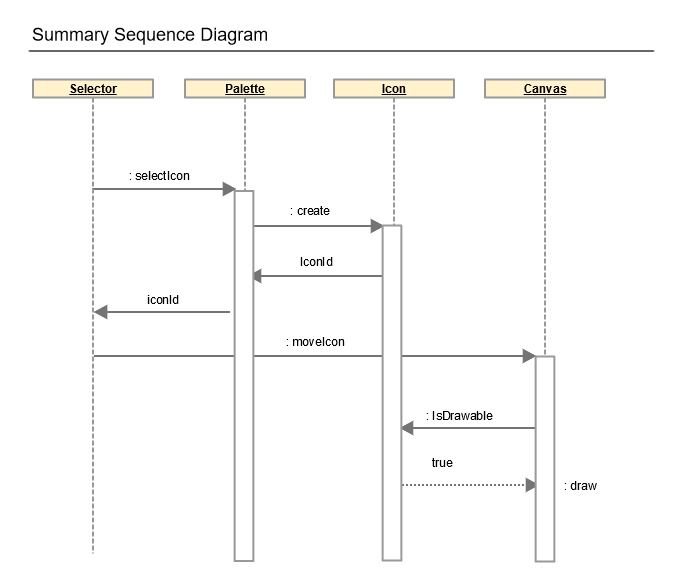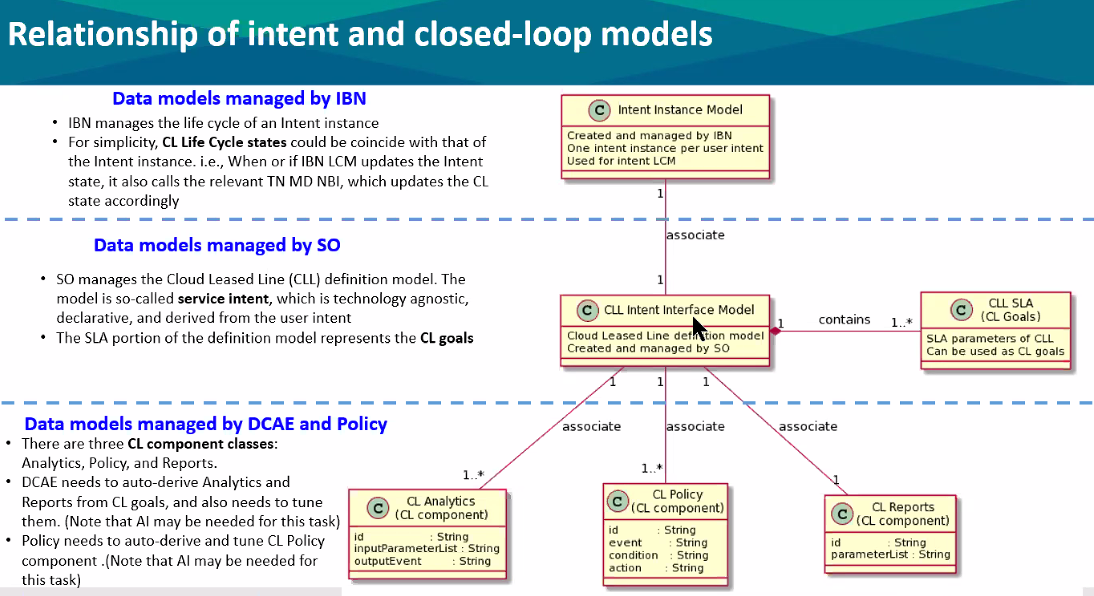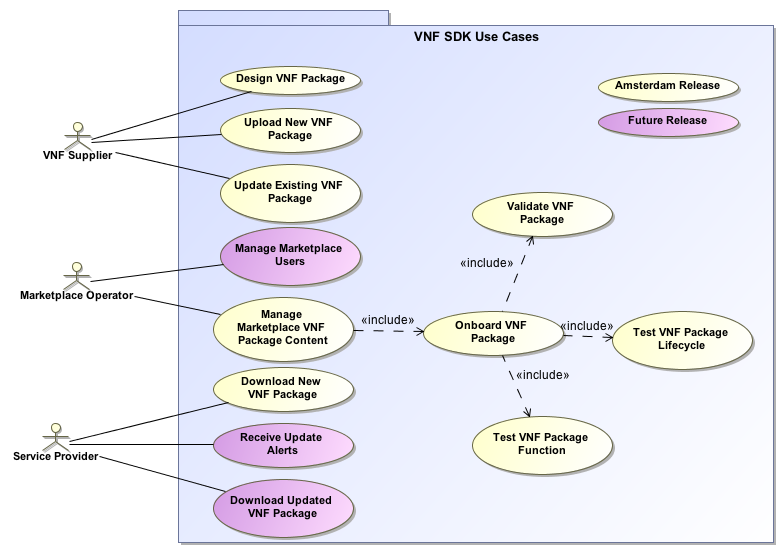Use Case Overview & Description
The new network applications, like E2E Slicing and CCVPN, provide different SLA services to customers. In this REQ, a scenario of intent guarantee is proposed to support the SLA requirements of users in run-time, as well as updating users’ intents. In R9, Intent instance will be developed to support the E2E Slicing and CCVPN.
Use Case Key Information
| TOPIC | DESCRIPTION | WIKI PAGE |
| Requirements Proposal | This is a link to the requirements proposal made on the Requirements Sub-committee | Istanbul release - functional requirements proposed list#SmartIntentGuaranteebasedonIBN-R9IntentInstance |
| Architecture S/C info | Information on the Architecture sub-committee presentation | |
| Prior Project "Base" Wiki | Link to the "base" wiki for the Use Case, or work from a prior release. | |
| Requirements Jira (REQ-861) Ticket | Link to the REQ Jira ticket for this use case | REQ-861 - Getting issue details... STATUS |
| Key Use Case Leads & Contacts | USE CASE LEAD: Dong Wang Henry Yu LIN MENG Swaminathan Seetharaman USE KEY CONTACTS: Dong Wang | |
| Meetings Register & Recordings | Link to Use Case Team meetings. |
BUSINESS DRIVER
This section describes Business Drivers needs. These business drivers are presented on the Requirements Sub-committee and should also be put into the release requirements sub-committee page.
Executive Summary - Intent-based network (IBN) is a self-driving network that uses decoupling network control logic and closed-loop orchestration techniques to automate application intents. An IBN is an intelligent network, which can automatically convert, verify, deploy, configure, and optimize itself to achieve target network state according to the intent of the operators, and can automatically solve abnormal events to ensure the network reliability. In R9, a scenario of intent guarantee is proposed, and the development of Intent instance will be done to support the use cases of both E2E Slicing and CCVPN.
Business Impact - It is a challenging problem to guarantee the users’ intents in run-time. The REQ of intent-based network provides a scenario of users’ intent guarantee and interacting.
Business Markets - This REQ provides a novel solution to support the SLA service.
- A users’ intent instance is proposed to monitor and analysis the network in run-time to satisfy the users’ SLA service.
- The users’ intents are updated in run-time based on the network situation and the interaction with users.
Funding/Financial Impacts - This function will provide more SLA services to increase the income of operators based on the current networks with few investments.
Organization Mgmt, Sales Strategies - There is no additional organizational management or sales strategies for this use case outside of a service providers "normal" ONAP deployment and its attendant organizational resources from a service provider.
Development Status
| PROJECT | PTL | User Story / Epic | Requirement |
| A&AI | |||
| AAF | |||
| APPC | |||
| CLAMP | |||
| CC-SDK | |||
| CPS | Toine Siebelink | ||
| DCAE | |||
| DMaaP | Mandar Sawant (Old) → Fiachra Corcoran (New) | ||
| External API | |||
| HOLMES | |||
| MODELING | |||
Multi-VIM / Cloud | |||
| OOF | |||
| OOM | |||
| POLICY | |||
| PORTAL | |||
| SDN-C | |||
| SDC | |||
| SO | |||
| VID | |||
| VF-C | |||
| VNFRQTS | |||
| VNF-SDK | Weitao Gao (Old) → user-67d6f (New) | ||
| CDS |
List of PTLs:Approved Projects
*Each Requirement should be tracked by its own User Story in JIRA
MODELING IMPACT
USE CASE DIAGRAM
Use cases define how different users interact with a system under design. Each use case represents an action that may be performed by a user (defined in UML as an Actor with a user persona).
Use Case Functional Definitions
Use Case Title | Title of the Use Case |
Actors (and System Components) | The list of Actors and System Components that participate in the Use Case |
Description | Short overview of the Use Case |
Points of Contact | Authors and maintainers of the Use Case. Use Case Lead, Key Use Case members and code contributors. |
Preconditions | A list of conditions that are assumed to be true before the Use Case is invoked Includes description of Information Consumed |
Triggers / Begins when | Describes the trigger for beginning the Use Case |
Steps / Flows (success) | Describes the sequence of steps and interactions that occur during the Use Case (may include: description, data exchanges, functionality, state changes) Interaction diagrams may be included or referenced |
Post-conditions | The expected results of the execution of the Use Case Includes description of Information Produced |
Alternate / Exception Paths | Description of any exceptions or special process that could occur during Use Case |
Related Use Cases | List of the Use Cases referenced by this Use Case |
Assumptions | Describes any assumptions that are made for this use case |
Tools / References / Artifacts | List of any tools or reference material associated with this Use Case as well as any JIRA trace-ability. List of any associated diagrams or modelling artifacts associated with the Use Case |
TESTING
Current Status
Testing Blockers
- High visibility bugs
- Other issues for testing that should be seen at a summary level
- Where possible, always include JIRA links
End to End flow to be Tested
**This should be a summary level Sequence diagram done in Gliffy**

Test Cases and Status
| 1 | There should be a test case for each item in the sequence diagram | NOT YET TESTED |
| 2 | create additional requirements as needed for each discreet step | COMPLETE |
| 3 | Test cases should cover entire Use Case | PARTIALLY COMPLETE |

